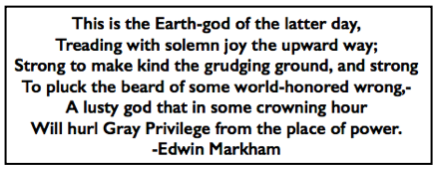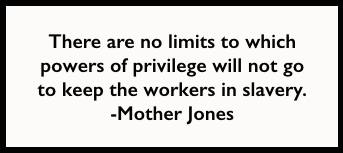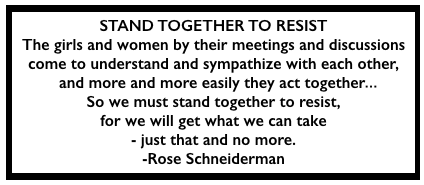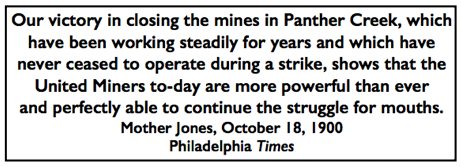 ———-
———-
Hellraisers Journal – Monday December 10, 1900
“The Sower” by Edwin Markham, Based on Millet’s Painting
From the Social Democratic Herald of December 8, 1900:
 ———-
———-
Hellraisers Journal – Monday December 10, 1900
“The Sower” by Edwin Markham, Based on Millet’s Painting
From the Social Democratic Herald of December 8, 1900:
 ———-
———-
Hellraisers Journal – Thursday December 9, 1920
Donaghadee, County Down, Ireland – Young James Sullivan Has Died
From the Butte Daily Bulletin of December 8, 1920:
James Sullivan, known to thousands of miners in the Coeur d’Alenes and Montana mining camps as “Jimmie,” one of the victims of the murder-list of the Anaconda Copper Mining company as exemplified by the actions of the company’s gunmen on Anaconda road, Butte, Bloody Wednesday, April 21, 1920, is dead. Jimmie died yesterday at the home of his parents, Donaghadee, County Down, Ireland, where he had been taken last September, a helpless cripple, to spend the remaining days of his life with his parents and sisters and brothers.News of young Sullivan’s death, the second resulting from the wanton brutality consummated by the Anaconda company’s gunmen on Anaconda road during the last miners’ strike, under the direction of Roy S. Alley and D. Gay Stivers of the company’s general staff, and under the personal observation of Sheriff John K. O’Rourke, was received in Butte today by cablegram from Ireland to J. V. Watson of Butte, a close friend of the unfortunate Sullivan.
The message merely stated that Jimmie had succumbed to his wound-a bullet in his spine-fired there by one of the company’s gunmen as Jimmie, with several hundred other unarmed strike pickets fled down Anaconda hill to escape the rain of lead from the riot guns, rifles and revolvers of the company’s gunthugs and city policemen.
The death of Sullivan, added to that of Thomas Manning, who died a week after the murderous attack on the pickets, marks the second actual death resulting from that occasion. Others of the more than a score of unarmed, peaceful pickets who were shot in their backs as they fled, are living deaths, cripples who will go through life without even the consolation of an early death to relieve them of their sufferings.
 ———-
———-
Hellraisers Journal – Wednesday December 8, 1920
Max Eastman: “John Reed sacrificed a life to the revolution…”
From The Liberator of December 1920
-“Fog” by John Reed:
———-
JOHN REED
[-from Speech by Max Eastman.]
WE have been reading in the great newspapers of this city the last few days very appreciative accounts of the life and character of John Reed. They have permitted themselves to admire his courage and honesty and the great spirit of humorous adventure that was in him. They permit themselves to admire him in spite of the fact that he died an outlaw and a man wanted by the police as a criminal. They admire him because he is dead. But we speak to a dIfferent purpose. We pay our tribute to John Reed because he was an outlaw. We do not have to examine the indictment, or find out what special poison the hounds of the Attorney-General had on their teeth against John Reed. We know what his crime was-it is the oldest in all the codes of history, the crime of fighting loyalty to the slaves. And we pay our tribute to him now that he lies dead, only exactly as we used to pay it when he stood here making us laugh and feel brave, because he was so full of brave laughter. Our tribute to John Reed is a pledge that the cause he died for shall live.
 ———-
———-
Hellraisers Journal – Tuesday December 7, 1920
Mingo County, West Virginia – Fred Mooney Reports on Miners’ Struggle
From the United Mine Workers Journal of December 1, 1920:
Figures About Mingo County Are Juggled
Editor The Journal-One B. C. Clarke, supposed to be a representative of the New York Herald, in its issue of Sunday, November 7, says in part, that the “strike” in Mingo county, West Virginia, has cost $24,200,000.00 and a loss in tonnage production of five million tons. We do not know what prompted Mr. Clarke to juggle figures as he did in this article, but anyone with any intelligence whatever, can readily see that the article is a gross misrepresentation of facts.
In the first instance, Mr. Clarke leaves the impression that the “strike” in Mingo county is a continuance of the Hatfield-McCoy feuds. Nothing could be further from the truth, as there is no feud in this territory now, nor has there been any marks of one for years. The economic aspect of the struggle now going on in Mingo county is a struggle of a group of crushed wage slaves who have been robbed from their birth of from 35 to 50 per cent of the wages rightfully earned by them and that portion of their wages of which they were robbed was paid out to private armies of “gunmen” to club the miners into submission.
Let us review the figures quoted by Mr. Clarke. He says that 700 miners are on “strike”, which is a fabrication manufactured of whole cloth. Let us see if the loss in tonnage production is 5,000,000 tons. The miners were locked out on July 1, 1920. Four months they have been out of employment, 26 days to each month. If every miner had worked full time, each would have had to produce in round figures, 68 tons per day; or take his total number of employees thrown out of employment, which was 3,500 and they would have had to produce 13.73 tons per day, which is impossible, as the highest average of production per employe was reached in 1918, and for that year, the average production per employe, was 4.20 tons. The average production per miner for the year of 1918 in the State of West Virginia, was 7.65 tons. This average was the highest in the history of the state.
 ———-
———-
Hellraisers Journal – Tuesday December 6, 1910
Fresno, California – Free Speech Fight Renewed; Fellow Workers Arrested
From The Fresno Morning Republican of November 30, 1910:
The Long threatened clash between the Industrial Worker of the World and the local police materialized last night. Twenty-four of the followers of the red flag were lodged in jail by Chief Shaw and a squad of ten policemen.
The expected invasion began at 6 o’clock and continued till 9 when the 34th agitator was taken into custody. During these three hours the police department was never busier in the history of Fresno. As fast as central could ring the bell at police headquarters, Night Desk Sergeant Frank Truax was kept busy jotting down the various corners in the downtown section where the I. W. W.’s were trying to make speeches. Several of the “red shirts” were making wild-eyed speeches to a handful of men. At H and Kern streets two were talking at the same time from soap boxes to a half dozen listener.
Among the twenty-four arrested were three of the leaders, James Murdock, C. L. Fligino [Filigno] and F. H. Little. Yesterday morning Chief Shaw appeared in the police court and swore to complaints charging Murdock and Fligino with vagrancy. It is said that they receive no compensation from the Industrial Workers. In fact, Murdock and Fligino admit that they are speaking for the “good of the cause.”
 ———–
———–
Hellraisers Journal – Monday December 5, 1910
14,0000 Coal Miners Slaughter During Past Ten Years
From the Spokane Industrial Worker of December 1, 1910:
Statistics show that 14,000 coal miners miners have been slaughtered in the mines in the last 10 years. At the rate coal miners have been murdered in the last two months in the United States, the death rate will increase by leaps and bounds…..
———-
 ———-
———-
Hellraisers Journal – Tuesday December 4, 1900
L’Internationale by Eugène Pottier, Translated by C. H. Kerr
From the International Socialist Review of December 1900:
———-
 ———-
———-
Hellraisers Journal – Saturday December 3, 1910
Chicago, Illinois – Report on Strike of 41,000 Garment Workers, Part II
From the International Socialist Review of December 1910:
[Part II.]
Not satisfied with cutting the rates and wages of the tailors, the firm instituted a system whereby the employes were charged from five to fifteen dollars for the least damage done to a garment. Lost spools, bobbins and other implements were charged up to the workers and taken out of their wages.
During the slack months, the piece workers were forced to report for work. They sat around in the shops, work or no work, earning no money, but stifling in the close, dust laden atmosphere of the fabric smelling shops.
When the pre-season months, those that constitute the busy time in the clothing industry, arrived, things changed as if by magic. Every employe was driven at top speed. Girls who had worked late into the night at home, threading needles or doing other work in order to make more money and sidestep the ten-hour law, came down to work next morning almost ill. None, however, were ever allowed to go home when sick.
Girls who asked permission to go home when sick were given some powders—good for every ailment from an earache to a sick stomach. If these powders failed to cure and the girl fainted, as happened several times each day, a doctor was summoned. But never, under any circumstances, was a girl or boy given permission to go home when sick, at least not until more substantial evidence than a sickly appearance or a mere statement was given.
 ———-
———-
Hellraisers Journal – Friday December 2, 1910
Chicago, Illinois – Report on Strike of 41,000 Garment Workers, Part I
From the International Socialist Review of December 1910:
[Part I.]
PERSONS who look upon the present Garment Workers’ strike in Chicago as a pure and simple labor battles are securing only an outward glimpse of the situation.
The strike itself, truly enough, was brought on by a revolt of the poor under paid girls and boys, men and women. It was a simultaneous upheaval of over 41,000 garment workers brought on by sixteen girls against petty persecution, low wages, abuse and long hours, an upheaval, unorganized at the start, which later took on the form of a fight for recognition of the union.
Behind the scenes, however, shut off from the public view, there is a mortal combat of big and small interests going on. A combat that is likely to settle, once for all, a battle of many years’ standing.
Like every other trustified industry, the production of clothing was at first limited to a number of independent manufacturers. These concerns unhampered by much competition grew to giant proportions.
Chicago, however, grew as rapidly as did the concerns. The city was soon divided into neighborhoods of various nationalities. Among these nationalities there were many venturesome persons who went into the tailoring business and made it a point to appeal to people of their own tongue.
Thus it was that gradually the business of the big concerns began to decrease. The more the city grew in population the more small tailor shops sprang up until they were growing, it seemed, over night, like mushrooms.
 ———-
———-
Hellraisers Journal – Saturday December 1, 1900
Mother Jones News Round-Up for October 1900, Part VI
Philadelphia, Pennsylvania – Mother Jones Learns of Great Victory
From the Wilkes-Barre Daily News of October 27, 1900:
“MOTHER” JONES TALKS OF THE STRIKE.
PHILADELPHIA, Oct. 26.-When “Mother” Jones left the coal regions for this city yesterday the strike had not ended, and it was not until this morning that she learned that the differences between the miners and the operators had been satisfactorily adjusted until April at least. This afternoon, just previous to her departure for Hazleton, “Mother” Jones called at the headquarters of the Allied Building Trades, in Odd Fellows’ Temple. She was jubilant over the result, and spoke encouragingly of the future for the coal miners and their families. She modestly received the congratulations of a number of prominent labor men.
[She said:]
It is the greatest victory in the history of organized labor. Of course, the strikers did not get all they asked for, but they have paved the way towards getting more. There is no telling what may happen in the spring, when the agreement of the operators terminated. There may be more trouble if the concessions made are not to be permanent. There never was a strike of such magnitude in which there was less disorder. Throughout there was a respect for law and order manifest on all sides.
The one deplorable feature of the great battle for human rights was the calling out of the militia by a hot-headed Sheriff. There was no more need of soldiers there that there is in this city at the present time
———-
[Photograph added.]